Discover the essential guide for installing a Metra Line Output Converter, featuring detailed wiring diagrams and step-by-step instructions for seamless car audio system integration․
Overview of the Metra Line Output Converter
The Metra Line Output Converter (LOC) is a versatile automotive audio component designed to convert high-level speaker signals into low-level RCA outputs․ This allows seamless integration of amplifiers, subwoofers, and other line-level audio equipment into car stereo systems․ Compact and easy to install, the LOC is ideal for upgrading factory or aftermarket systems․ It features signal-sensing turn-on functionality, adjustable line level outputs, and high/low impedance settings, ensuring compatibility with a wide range of audio configurations․ The LOC is a crucial tool for achieving high-quality sound while maintaining system efficiency and reliability․
Importance of Wiring Diagrams for Installation
Wiring diagrams are crucial for a successful Metra Line Output Converter installation, providing clear visual guidance for connecting components․ They simplify the process of identifying input/output terminals, RCA connections, and power wires․ Properly following the diagram ensures correct signal flow, preventing short circuits and system damage․ It helps in troubleshooting common issues like wiring errors or internal faults, ensuring smooth operation․ With detailed diagrams, even novice installers can achieve professional results, making the Metra LOC an accessible upgrade for enhancing car audio systems effectively and safely․
Key Features of the Metra LOC
The Metra LOC offers advanced features like signal sense turn-on, automatically activating when it detects audio signals, eliminating the need for a remote control․ It provides adjustable line level output, allowing customization to match amplifier requirements․ High and low input impedance settings ensure compatibility with various car stereos․ The compact design simplifies installation, while its robust construction ensures reliable performance․ These features make the Metra LOC an essential tool for integrating amplifiers and speakers, enhancing your car audio system’s flexibility and sound quality without compromising ease of use or durability․

Installation Guide for Metra Line Output Converter
This guide provides step-by-step instructions for installing the Metra LOC, including connecting RCA cables, speaker wires, and power wires, and configuring advanced features like signal sense turn-on and adjustable line level output․
Preparation for Installation
Before starting, disconnect the vehicle’s battery to ensure safety and prevent electrical hazards․ Gather all necessary tools, such as wire strippers, connectors, and a multimeter․ Locate the wiring diagram specific to your Metra Line Output Converter and vehicle make․ Identify the speaker output wires from the stereo or OEM amplifier․ Ensure the converter is compatible with your system’s impedance and voltage requirements․ Plan the wire routing to maintain a clean and organized setup․ Double-check the ground wire connection for proper grounding․ Wear protective gear and work in a well-ventilated area․ Review all safety precautions and installation steps before proceeding․
Connecting the Line Output Converter to the Stereo
Connect the Line Output Converter (LOC) to the stereo’s speaker output wires, ensuring correct polarity․ Match the positive and negative terminals as per the wiring diagram․ For non-amplified systems, attach the LOC directly to the stereo’s speaker outputs․ In amplified setups, connect the LOC to the amplifier’s output wires․ Use RCA cables to link the LOC’s line-level outputs to the amplifier’s inputs․ Secure all connections with heat shrink or electrical tape․ Double-check the wiring to avoid signal loss or short circuits․ Refer to the Metra wiring diagram for specific pin configurations and color coding to ensure accurate installation․ Proper connection ensures optimal audio performance and system reliability․
Wiring the Converter to the Amplifier
Connect the RCA outputs from the Metra Line Output Converter to the amplifier’s RCA inputs․ Ensure the left and right channels are correctly matched․ Use high-quality RCA cables for minimal signal degradation․ If your amplifier has multiple input options, select the appropriate one․ For systems with subwoofers, connect the LOC’s dedicated subwoofer output to the amplifier’s subwoofer input․ Verify all connections with the wiring diagram to maintain proper signal flow․ Secure the cables neatly to prevent interference or damage․ Proper wiring ensures clear audio transmission and optimal system performance, as outlined in the Metra LOC installation guide․
Testing the Installation
Once the wiring is complete, turn on the stereo to test the installation․ Ensure clear audio output from all speakers and subwoofers․ Check for distortion or unusual noise, which could indicate incorrect wiring or improper gain settings․ Verify that the remote turn-on signal activates the amplifier․ If issues arise, consult the wiring diagram to trace connections․ Use a multimeter to test voltage levels and ensure no short circuits․ Adjust the line level output on the LOC to match your amplifier’s requirements․ Finally, play music at moderate volume to confirm balanced sound across all channels․ Proper testing ensures reliable performance and prevents potential damage to components․
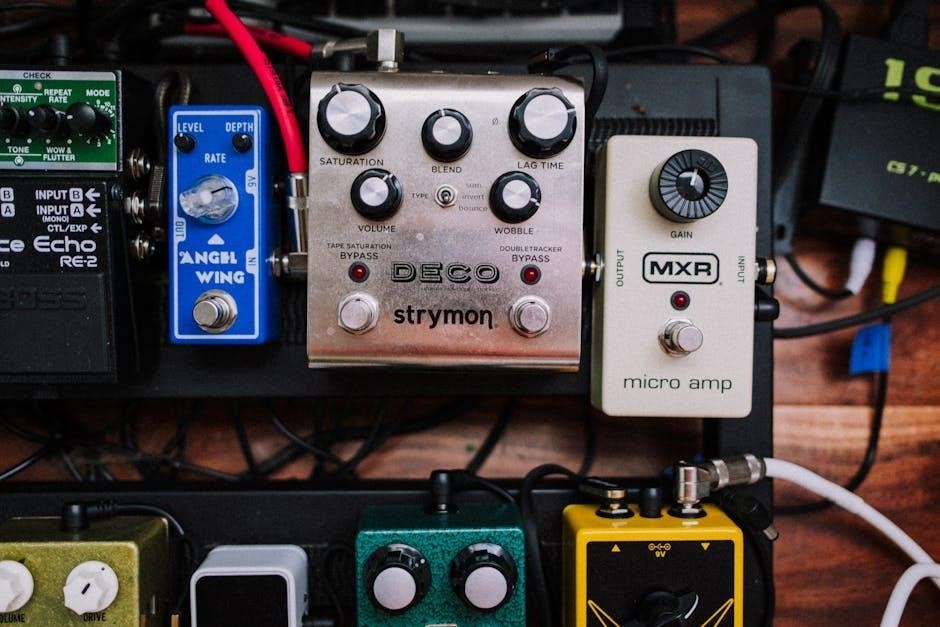
Understanding the Wiring Diagram
The wiring diagram provides a visual guide for connecting the Metra LOC, showcasing components like RCA inputs, speaker wires, and power lines․ It simplifies installation by mapping connections clearly․
Decoding the Symbols and Components
Understanding the symbols in the Metra Line Output Converter wiring diagram is crucial for accurate installation․ The diagram uses specific icons to represent components like RCA inputs, speaker wires, and power lines․ Each symbol corresponds to a physical part, such as the LOC itself, the amplifier, or the head unit․ Color-coded wires are often depicted, with labels indicating their purpose (e․g․, gray for right positive, white for left positive)․ Ground wires (brown) and remote turn-on leads (yellow) are also highlighted․ By decoding these symbols, users can identify connections, ensuring proper routing and avoiding installation errors․ This step is essential for troubleshooting and achieving optimal audio performance․
Identifying Input and Output Terminals
The Metra wiring diagram clearly distinguishes input and output terminals to ensure precise connections․ Input terminals typically connect to the head unit’s speaker wires or RCA pre-outs, while output terminals link to the amplifier or speakers․ RCA connectors are labeled for left and right channels, and speaker wires are color-coded (e․g․, gray for right positive, white for left positive)․ Ground terminals are often marked with a “G” or brown wire․ Properly identifying these terminals ensures signals flow correctly, avoiding short circuits or audio distortion․ This step is vital for maintaining system performance and longevity․
Understanding RCA, Speaker, and Power Wires
RCA wires are used for line-level audio signals, connecting the head unit to the amplifier or LOC․ Speaker wires carry higher power to speakers, often color-coded for polarity․ Power wires supply voltage to components, requiring proper gauge for reliable operation․ RCA cables are typically marked for left and right channels, while speaker wires are labeled positive (e․g․, white, gray) and negative (e․g․, black, white/black)․ Correctly identifying these wires ensures accurate connections, minimizing noise or damage․ Proper routing and insulation are essential to maintain signal integrity and system performance, as outlined in the Metra wiring diagram․

Troubleshooting Common Issues
Identify and resolve wiring errors, internal faults, or output contact issues with the Metra LOC․ This guide helps diagnose and fix problems efficiently, ensuring optimal performance․
Diagnosing Wiring Errors
Wiring errors are common issues during Metra LOC installation․ Start by verifying all connections match the wiring diagram․ Check for loose wires, incorrect terminals, or short circuits․ Use a multimeter to test voltage levels and ensure proper grounding․ If the LOC fails to activate, inspect the remote turn-on wire connection․ For audio issues, verify RCA and speaker wire links․ Refer to the troubleshooting section in the PDF guide for detailed steps to pinpoint faults and restore functionality quickly․ Proper diagnosis ensures reliable operation and prevents further system damage․
Resolving Internal Errors
Internal errors in the Metra LOC can disrupt audio output and functionality․ Begin by disconnecting the power source to ensure safety․ Check the RCA connections for proper alignment with the input terminals․ Verify the power wire is securely attached to the remote turn-on circuit․ If issues persist, reset the LOC by temporarily shorting the reset pin․ Consult the wiring diagram in the PDF guide to ensure all connections match the recommended configuration․ For persistent faults, inspect the LOC for physical damage or internal component failure․ Refer to the troubleshooting section for advanced diagnostic steps or consider consulting a professional․ Always follow safety protocols to avoid further damage․
Fixing Output Contact Issues
Output contact issues in the Metra LOC can cause signal loss or distortion․ Start by inspecting the RCA output terminals for dirt or corrosion․ Clean the contacts using a soft cloth and electrical cleaner․ Ensure the RCA cables are firmly connected to the appropriate outputs․ If the problem persists, check the wiring diagram to confirm the correct connection of the line level output to the amplifier․ Verify the output terminals are not overloaded or short-circuited․ Replace any damaged RCA cables or terminals․ If issues remain, consult the troubleshooting section of the PDF guide for further diagnostic steps or consider professional assistance to resolve the problem effectively․
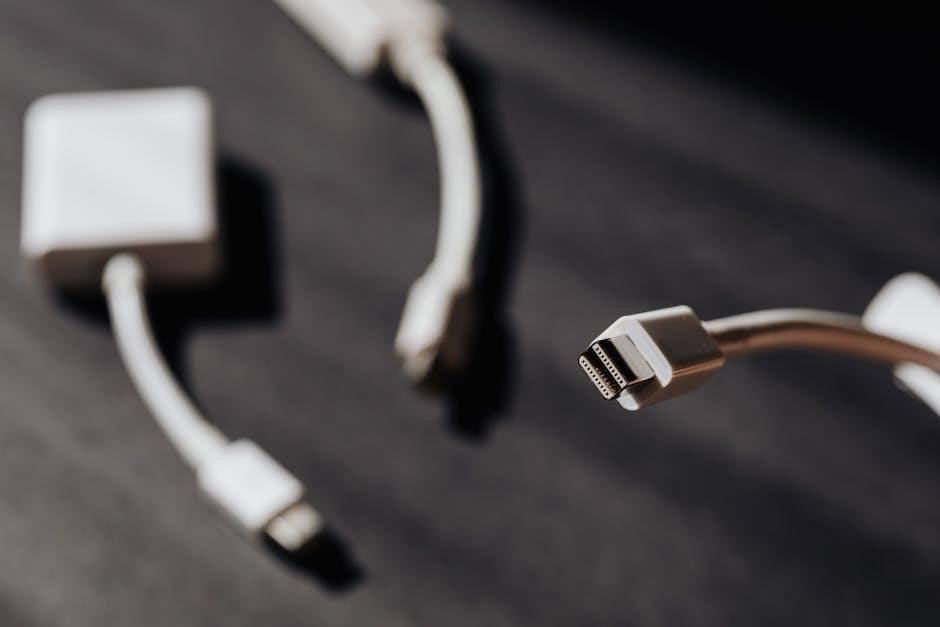
Advanced Features of the Metra LOC
The Metra LOC offers advanced features like signal sense turn-on, adjustable line level output, and high/low impedance settings, ensuring enhanced performance and compatibility for premium audio setups․
Signal Sense Turn-On Functionality
The Metra LOC features a signal sense turn-on function, automatically activating when it detects an audio signal․ This eliminates the need for a separate remote wire, simplifying installation․ By sensing the input signal, the LOC powers up instantly, ensuring seamless operation․ This feature is particularly useful for systems without a dedicated remote output, making it versatile for various car audio setups․ It enhances convenience and reduces clutter, allowing for a cleaner and more efficient installation process․ The signal sense functionality ensures the LOC operates smoothly, providing reliable performance for your car audio system․
Adjustable Line Level Output
The Metra LOC offers adjustable line level output, allowing fine-tuning of audio signals to match your amplifier’s requirements․ This feature ensures optimal performance by preventing clipping or distortion․ By adjusting the output level, you can achieve a perfect balance between your head unit and amplifier, enhancing sound quality․ The adjustable output is particularly useful for systems with varying input sensitivities, providing flexibility for different setups․ This customization capability makes the Metra LOC a versatile solution for car audio enthusiasts seeking precise control over their system’s performance and sound clarity․
High and Low Input Impedance Settings
The Metra Line Output Converter features high and low input impedance settings, providing compatibility with a wide range of audio systems․ High input impedance ensures minimal loading of the source device, preserving signal integrity․ Low input impedance settings are ideal for systems requiring lower input resistance, offering flexibility for diverse setups․ These settings allow seamless integration with modern and legacy audio equipment, ensuring optimal performance․ By selecting the appropriate impedance, users can achieve a balanced and clear audio output, enhancing their overall listening experience․ This versatility makes the Metra LOC a reliable choice for various car audio configurations and upgrades․

Applications of the Metra Line Output Converter
The Metra Line Output Converter is ideal for adding amplifiers, integrating speakers and subwoofers, and upgrading car audio systems for enhanced sound quality and flexibility․
Adding Amplifiers to a Car Audio System
The Metra Line Output Converter simplifies adding amplifiers to your car audio system by converting speaker-level signals to line-level outputs․ This allows seamless integration of aftermarket amplifiers without modifying the existing system․ By connecting the LOC to the stereo’s speaker wires, you ensure a clean, high-quality audio signal is sent to the amplifier․ This setup enhances sound quality, reduces noise, and provides flexibility for customizations․ The converter’s adjustable settings and compact design make it ideal for upgrading factory systems or adding more power to your car’s audio setup․ It’s a versatile solution for achieving professional-grade sound system enhancements․
Integrating Speakers and Subwoofers
Integrating speakers and subwoofers with the Metra Line Output Converter ensures a balanced and powerful audio experience․ Connect the LOC to your car stereo’s speaker wires, converting high-level signals to RCA outputs for your amplifier․ This allows seamless integration of additional speakers and subwoofers․ Use RCA Y-adapters or dedicated subwoofer outputs to channel low-frequency signals to your subwoofer․ Ensure proper impedance matching to prevent distortion․ Follow the wiring diagram to identify positive, negative, and ground connections․ Adjust the LOC’s settings for optimal signal strength․ This setup enhances bass response and overall sound quality, making it ideal for custom car audio configurations․
Upgrading Existing Car Stereo Systems
Upgrading your car stereo system becomes straightforward with the Metra Line Output Converter․ It bridges the gap between older systems and modern components, enabling the integration of high-performance amplifiers and speakers․ The LOC converts speaker-level signals to line-level outputs, ensuring compatibility with aftermarket equipment․ This solution is ideal for retaining factory radios while enhancing audio quality․ Follow the wiring diagram to connect the LOC to your stereo’s speaker wires, then route RCA outputs to your amplifier․ Adjust the LOC’s settings for optimal signal strength․ This upgrade pathway preserves your vehicle’s original features while delivering a more dynamic and immersive listening experience․
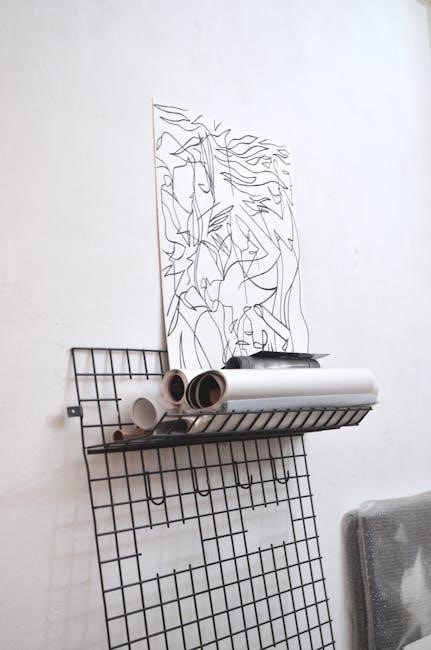
Best Practices for Wiring
Use proper gauge wire, install line noise filters, and maintain clean, organized wiring to ensure optimal performance and prevent interference in your audio system․
Using Proper Gauge Wire
Using the correct wire gauge is crucial for optimal performance and safety․ A lower gauge (thicker) wire reduces resistance and voltage drop, ensuring efficient power delivery․ For most car audio installations, 16-18 AWG wires are recommended for speaker connections, while 12-14 AWG is suitable for power and ground wires․ Incorrect wire gauge can lead to overheating, poor sound quality, or even system damage․ Always consult the wiring diagram or manual to determine the appropriate gauge for your specific setup․ Proper wire selection ensures reliable operation and maximizes the performance of your Metra Line Output Converter and associated audio components․
Installing Line Noise Filters
Line noise filters are essential for minimizing interference and ensuring clean audio signals․ Install filters on the head unit’s power wire and RCA cables to reduce electromagnetic interference (EMI) and radio frequency interference (RFI)․ These filters help eliminate buzzing, humming, or static caused by electrical noise from the vehicle’s systems․ Properly grounding the filters is crucial for their effectiveness․ Ferrite beads or inline noise suppressors are commonly used solutions․ By incorporating line noise filters, you can achieve a clearer, distortion-free audio experience․ Always refer to the wiring diagram for recommended filter placement and installation guidelines specific to your Metra Line Output Converter setup․
Maintaining Clean and Organized Wiring
Maintaining clean and organized wiring is crucial for a reliable and high-performance car audio system․ Properly label all wires using color-coded sleeves or markers to ensure easy identification․ Route wires neatly, avoiding tangles and excessive slack․ Secure wires using zip ties or clips to prevent damage from vibration or abrasion․ Keep wiring away from high-temperature areas and avoid pinching or crimping wires during installation․ Regularly inspect wires for signs of wear or damage and address issues promptly․ A clean wiring setup enhances system performance, reduces noise interference, and simplifies future upgrades or troubleshooting․ Always reference your Metra Line Output Converter wiring diagram for optimal routing and organization․

Downloading and Using the PDF Guide
Access the official Metra Line Output Converter wiring diagram PDF from their website․ Navigate to the “Support” or “Downloads” section for the latest manual․ Open the PDF to find detailed wiring diagrams, installation steps, and product specifications․ Use the bookmarks or table of contents to quickly locate the wiring section․ Print the relevant pages for easy reference during installation․ Ensure you have the correct version compatible with your specific Metra LOC model for accurate guidance․
Locating the Official Metra PDF Manual
To locate the official Metra Line Output Converter wiring diagram PDF, visit the Metra Electronics website․ Navigate to the “Support” or “Downloads” section․ Use the search bar to enter your specific product model or “Line Output Converter Wiring Diagram․” Select the correct manual from the search results․ Ensure the PDF is the latest version compatible with your Metra LOC model․ Bookmark or print the wiring diagram section for easy reference during installation․ This official guide provides accurate and detailed instructions for a successful setup․
Navigating the Wiring Diagram Section
The wiring diagram section of the Metra LOC PDF manual is organized to simplify installation․ Locate the section labeled “Wiring Diagram” or “Installation Diagrams․” Here, you’ll find detailed visual representations of connections, including RCA, speaker, and power wires․ Identify components like the converter, amplifier, and filters․ Use the legend or key provided to understand symbols and color coding; This section often includes step-by-step connections for inputs and outputs, ensuring proper setup․ Cross-reference with the written instructions for clarity․ Pay attention to specific wiring configurations for your system, such as line-level adjustments or remote turn-on leads․ This guide ensures accurate and safe connections․
Printing the Diagram for Reference
Printing the wiring diagram from the Metra Line Output Converter Wiring Diagram PDF is a straightforward process․ Open the PDF and locate the wiring diagram section using the table of contents for quick navigation․ Use the print function in your PDF reader, selecting the specific page or range of pages that contain the diagram․ Adjust print settings to ensure proper scaling, fitting the diagram to your paper size without losing details․ Choose between color or black and white printing based on your preference for detail visibility and cost․ Consider printing on larger paper for better readability and laminating the diagram to protect it from damage․ Ensure your printer settings are optimized for diagrams and consider double-sided printing to save paper․ Print a test page to verify settings before printing the final diagram․ Organize the printed pages securely for easy reference during installation․
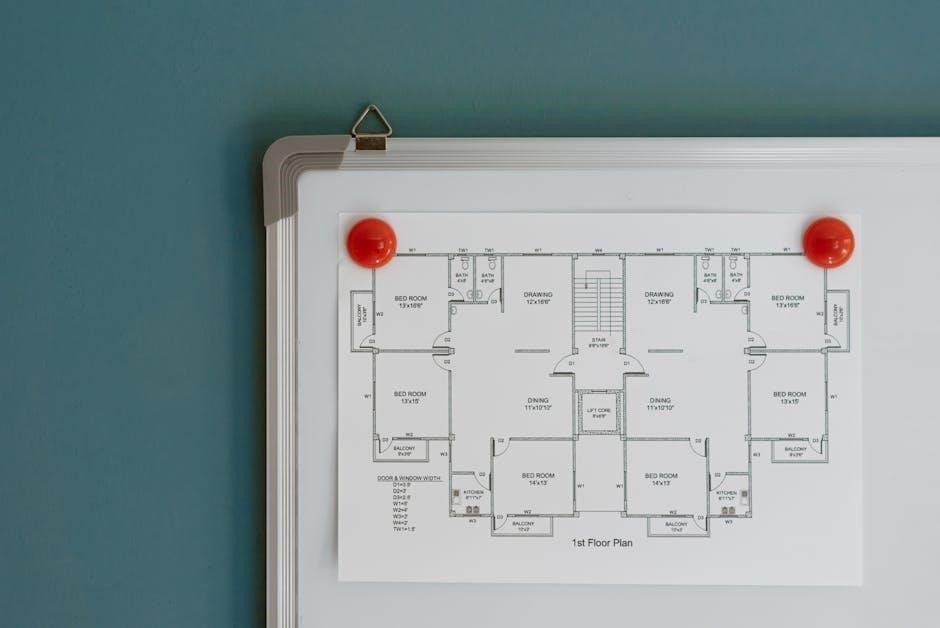
Safety Precautions
Always disconnect the battery before starting installation to prevent electrical shocks․ Avoid short circuits by ensuring proper insulation of wires․ Use proper grounding techniques to maintain system stability and safety․
Disconnecting the Power Source
Before starting any installation, ensure the vehicle’s ignition is turned off and the battery is disconnected․ This prevents electrical shocks and ensures a safe working environment․ Locate the battery, typically found in the engine compartment, and loosen the negative (black) terminal clamp with a wrench․ Completely remove the clamp to disconnect the power source․ Allow any capacitors in the system to discharge for a few minutes before proceeding․ Always follow proper safety protocols to avoid accidental power supply during the wiring process․ This step is crucial for protecting both the installer and the electrical components of the vehicle․
Avoiding Short Circuits
Avoiding short circuits is critical to ensure safe and reliable installation of the Metra Line Output Converter․ Always disconnect the battery before starting work to prevent unintended power surges․ Use properly insulated wires and secure all connections to avoid exposed conductors․ Never touch live wires or components with bare hands or metal tools, as this can cause short circuits․ Keep wires away from sharp edges or hot surfaces that could damage insulation․ Regularly inspect wires for signs of wear or damage and replace them if necessary․ Properly grounding the system and using high-quality connectors will also help prevent short circuits and ensure optimal performance․
Following Proper Grounding Procedures
Proper grounding is essential for a safe and noise-free installation of the Metra Line Output Converter․ Begin by identifying a suitable grounding point on the vehicle’s chassis, ensuring it is a clean, bare metal surface․ Use a wire brush to remove any dirt or corrosion for optimal conductivity․ Attach the ground wire securely, using high-quality connectors like ring terminals to prevent loosening over time․ Keep the ground wire as short as possible to minimize resistance and interference․ Connect the ground wire to the converter and ensure it is tightly secured to avoid vibrations causing it to come loose․ For enhanced reliability, consider grounding the amplifier and the LOC separately to prevent potential grounding issues․ Always follow the manufacturer’s guidelines for the best grounding practices․ Finally, ensure all connections are secure and test the system to confirm there is no electrical noise or interference, which could indicate improper grounding․ By adhering to these steps, you ensure a stable and safe electrical connection for your car audio system․
The Metra Line Output Converter simplifies amplifier integration․ Proper wiring ensures optimal performance․ Always follow safety guidelines and refer to the PDF for detailed instructions․
Summarizing the Key Points
The Metra Line Output Converter enables seamless integration of amplifiers and speakers into car audio systems․ Proper installation requires careful adherence to the wiring diagram and safety precautions․ Key features include signal sense turn-on, adjustable line levels, and high/low impedance settings․ Ensuring correct wire connections and using appropriate tools are crucial for optimal performance․ Always refer to the official PDF guide for detailed instructions and troubleshooting tips to avoid common issues like short circuits or ground faults․ Following best practices ensures a clean, organized, and functional setup․
Final Tips for Successful Installation
For a flawless installation, ensure all connections are secure and match the wiring diagram․ Use the correct gauge wire to prevent signal loss and overheating․ Install line noise filters to minimize interference and ensure clean audio output․ Test each connection before powering up the system to avoid short circuits․ Consult the official Metra PDF guide for specific instructions and troubleshooting tips․ Keep wiring organized and label connections for future reference․ Double-check all settings, such as adjustable line levels and impedance, to optimize performance․ Power up the system gradually to test each component, ensuring everything functions as expected․
Encouragement to Explore More Resources
For a deeper understanding of the Metra Line Output Converter, explore additional resources like official Metra manuals, online forums, and video tutorials․ These materials offer troubleshooting tips, advanced installation techniques, and insights from experienced professionals․ Visit the Metra website for downloadable PDF guides, wiring diagrams, and product-specific instructions․ Engage with car audio communities to learn from others’ experiences and gain practical advice․ Additionally, check out YouTube tutorials for visual guidance on complex wiring scenarios․ Staying informed and connected to these resources ensures you maximize the potential of your Metra LOC and achieve optimal performance in your car audio system․
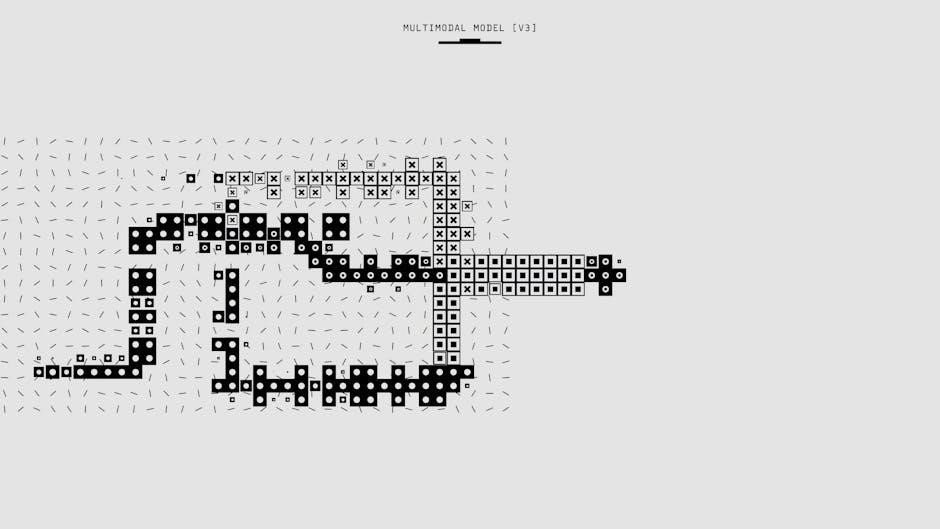
References
Visit MetraOnline․com for official manuals, wiring diagrams, and installation guides․ Explore forums like r/CarAV for user discussions and troubleshooting tips․ Refer to recommended tools and accessories for accurate installations․
Crediting the Source Materials
The information provided is based on official resources from MetraOnline․com, including the user manual for the Metra Line Output Converter and related wiring diagrams․ Additional insights were gathered from forums such as r/CarAV and technical discussions about car audio installations․ The wiring guide and troubleshooting tips are sourced from MetraDIY․com and the Metra Line Output Converter Installation Guide․ Special thanks to the contributors who shared their experiences and diagrams, ensuring a comprehensive understanding of the product․ These materials collectively provide a detailed and accurate resource for successful installation and troubleshooting․
Listing Recommended Tools and Accessories
For a successful installation, gather essential tools and accessories․ Use a wire harness and RCA cables for secure connections․ A multimeter is crucial for testing voltage and resistance․ Ensure you have 14-16 AWG wire for power and ground․ A screwdriver set and heat shrink tubing are necessary for clean, durable connections․ Consider a line noise filter to minimize interference․ Refer to the Metra wiring diagram for specific component locations․ These tools will help you achieve a professional-grade setup and ensure compatibility with your car audio system․
